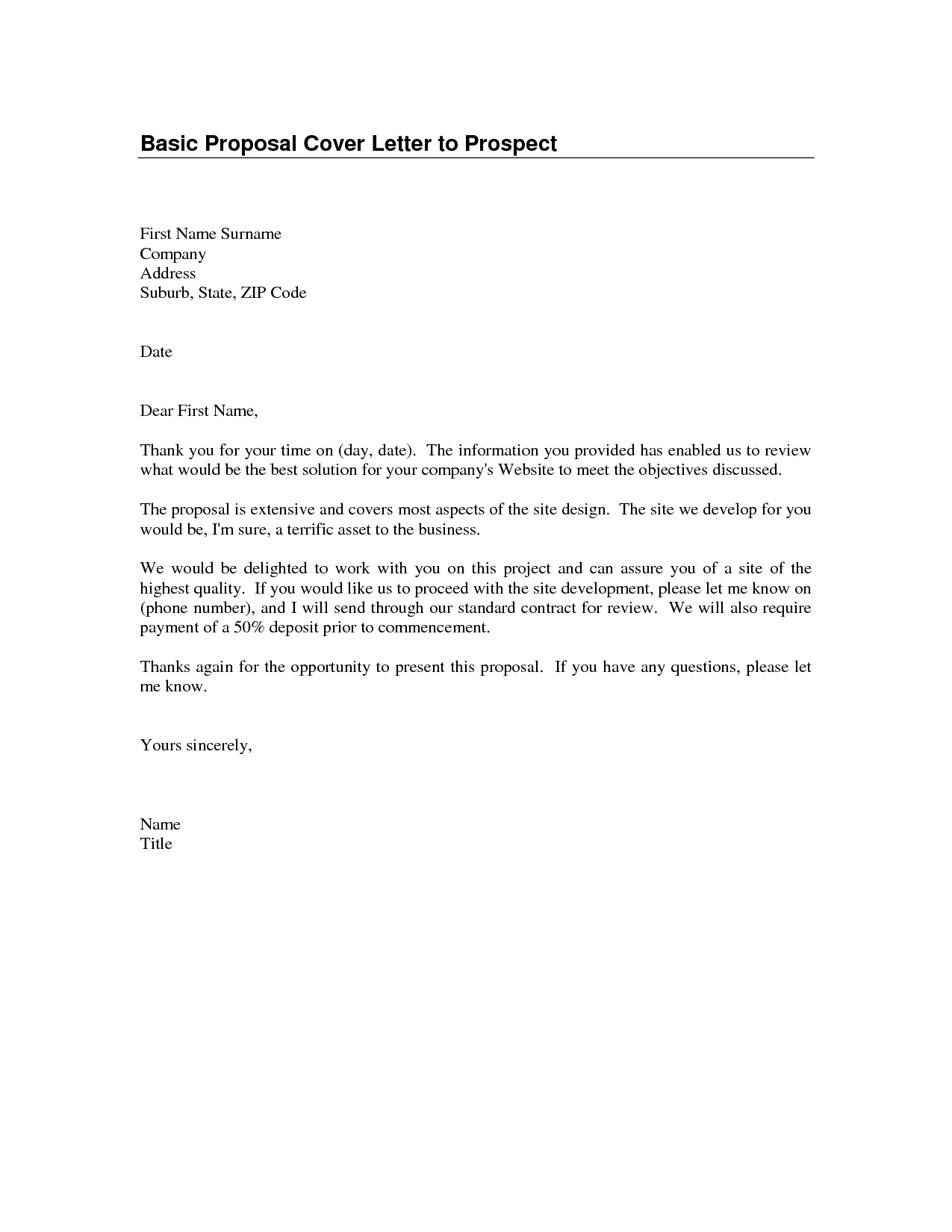What is a Proposal Cover Letter
A proposal cover letter is a crucial document that accompanies your proposal. It serves as a formal introduction and a summary of your proposal’s main points. Essentially, it’s the first impression you make on the recipient. It sets the tone for your entire proposal and can significantly influence whether it’s accepted or rejected. This letter isn’t just a formality; it’s a strategic tool designed to capture attention, highlight your key strengths, and persuade the reader to delve deeper into your proposal. Think of it as a handshake – it initiates a relationship and conveys professionalism and respect. Therefore, crafting a well-written proposal cover letter is the first step toward securing your project or securing funding.
Importance of a Proposal Cover Letter
The importance of a proposal cover letter cannot be overstated. It provides context for your proposal, allowing the reader to quickly understand its purpose and key takeaways. A well-crafted letter can immediately highlight the value you offer, making your proposal stand out from the competition. It allows you to personalize your approach, showing that you’ve considered the recipient’s specific needs and challenges. This personalized touch increases the likelihood of a positive response. Furthermore, it demonstrates your professionalism and attention to detail, which are crucial in any business or grant application. A strong cover letter indicates that you’ve taken the time to understand the project and are committed to its success.
Key Elements of a Winning Proposal Cover Letter
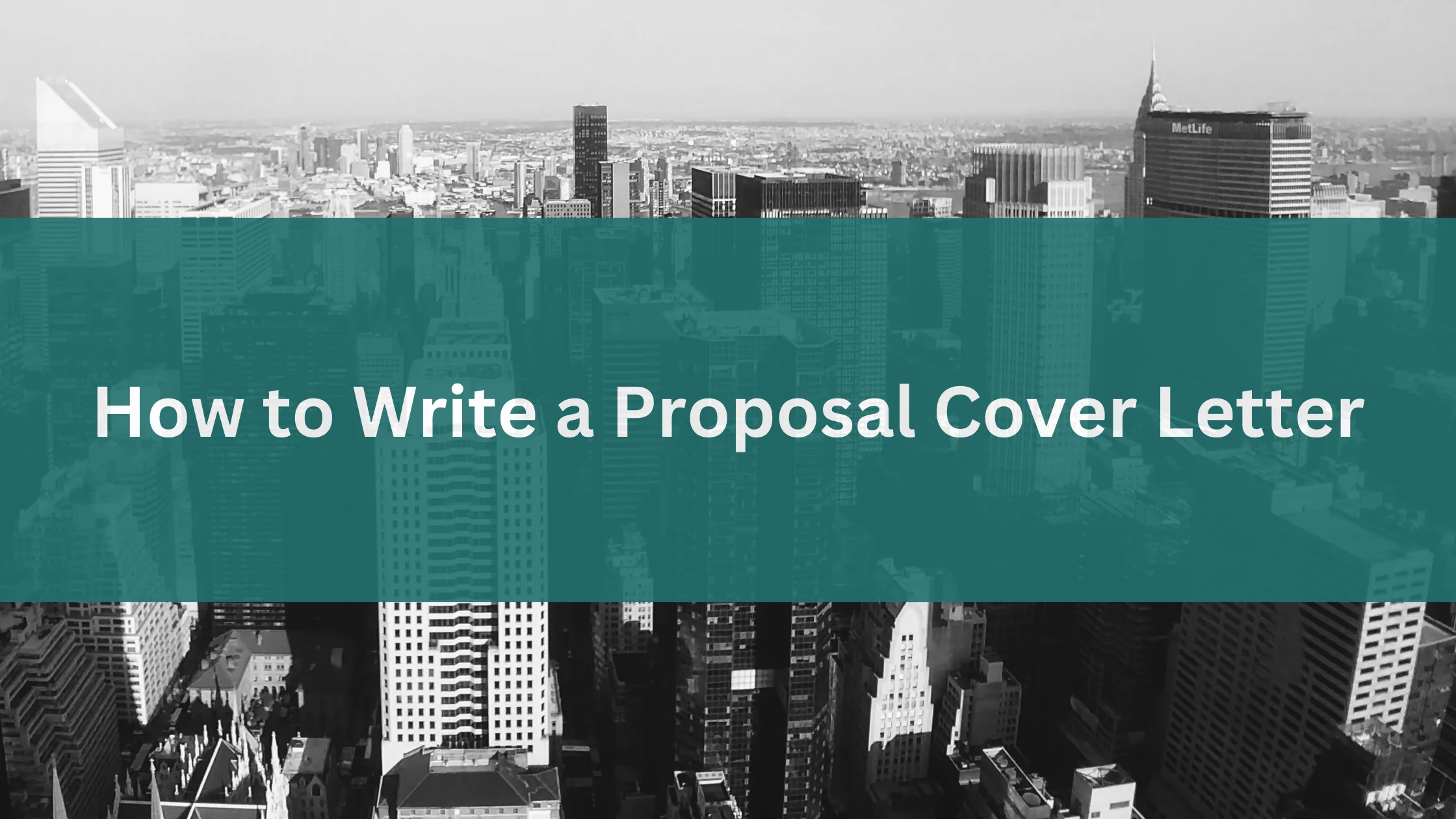
A winning proposal cover letter must include specific elements to make a compelling case. Starting with clear contact information and the date is fundamental. Then, the recipient’s details, including their name, title, and organization, should be included to show respect and attention to detail. A formal salutation is essential, addressing the recipient correctly. The body of the letter should concisely express your purpose, the problem you are addressing, and the proposed solution. Highlighting key benefits and value, showing how your proposal meets the recipient’s needs, and demonstrating an understanding of the project are also critical. It’s also important to mention the proposal’s contents, giving the reader a preview of what to expect. A clear call to action is necessary, stating what you want the reader to do next. Lastly, a professional closing and signature are essential for conveying a professional image.
Your Contact Information and Date
Begin your cover letter by providing your contact information at the top, usually aligned to the left. Include your full name, title, company name, address, phone number, and email address. Immediately below your contact details, on the same line or a separate one, include the date of the letter. Ensure this information is current and accurate, as it allows the recipient to easily reach you if needed. This section sets the stage for professionalism and ease of communication. A correctly formatted date is also crucial for record-keeping and identifying the proposal’s submission time. Remember, the goal is to make it easy for the recipient to know who you are and how to reach you.
Recipient’s Information
Directly below your information, include the recipient’s details. This includes their full name, title, and the company or organization they represent, along with their address. Address the recipient directly, which demonstrates respect and that you’ve tailored the letter to them. If possible, find out the name of the specific person who will be reviewing the proposal. Generic greetings are less effective. If you’re unsure of the exact name, try to find it through the company website or by calling their office. Addressing the right person significantly increases the chances that your cover letter will be noticed and read by the right audience. Accurate information emphasizes your professionalism.
Formal Salutation
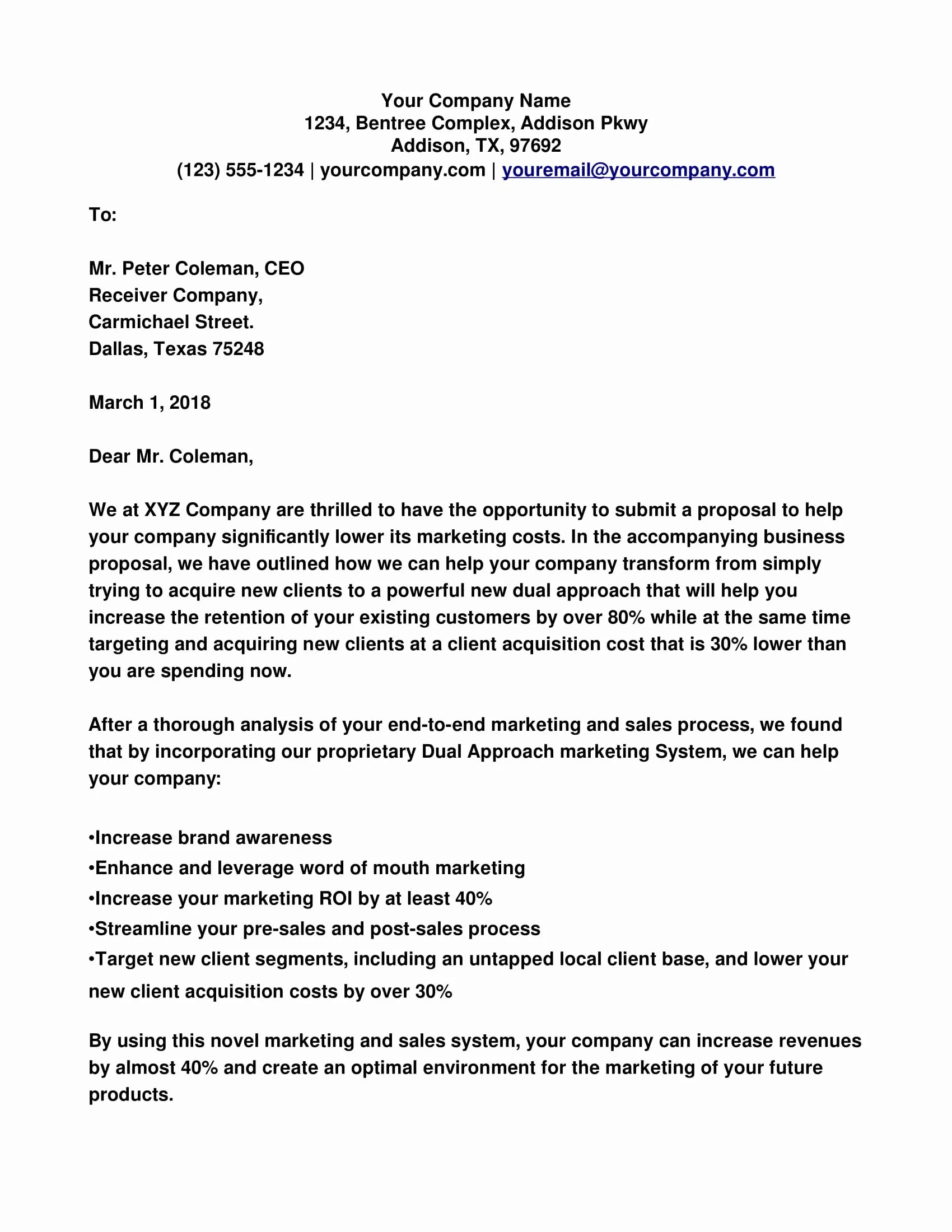
The salutation sets the tone of the letter. Always begin with a formal greeting. Use ‘Dear Mr./Ms./Dr. [Last Name]’ if you know the recipient’s name. If you don’t know the name, use ‘Dear [Title of the person evaluating proposals]’ or ‘To Whom It May Concern.’ Avoid casual greetings such as ‘Hi’ or ‘Hello.’ The salutation should be followed by a colon. A proper salutation establishes a professional relationship from the start, showing respect and attention to detail. It also indicates that you understand business etiquette and are capable of conducting professional correspondence. Ensuring a formal and respectful tone can significantly impact the recipient’s perception of your proposal.
Expressing Your Purpose
In the first paragraph, state the purpose of your letter and briefly mention the proposal’s subject. Clearly explain why you are writing. For example, ‘I am writing to submit a proposal for…’ or ‘This letter accompanies our proposal for…’ Be direct and concise. This initial statement should immediately inform the recipient of what you are offering. Avoid being vague; be specific about the service, product, or project you are proposing. This section is your chance to grab the reader’s attention and make them want to continue reading. Keep it short and to the point, focusing on the core reason for your communication.
Highlighting Key Benefits and Value
Emphasize the benefits and value your proposal offers. Briefly explain how your solution addresses the recipient’s needs and solves their problems. Focus on the positive outcomes the recipient will gain by accepting your proposal. Highlight your unique selling points and the advantages you have over competitors. Quantify your benefits whenever possible. For example, state that your solution can ‘reduce costs by 20%’ or ‘increase efficiency by 15%.’ Show how your proposal aligns with the recipient’s goals and objectives. Clearly communicate what makes your proposal stand out and why it is the best choice. Show that you have taken the time to understand their specific needs.
Demonstrating Understanding of the Project
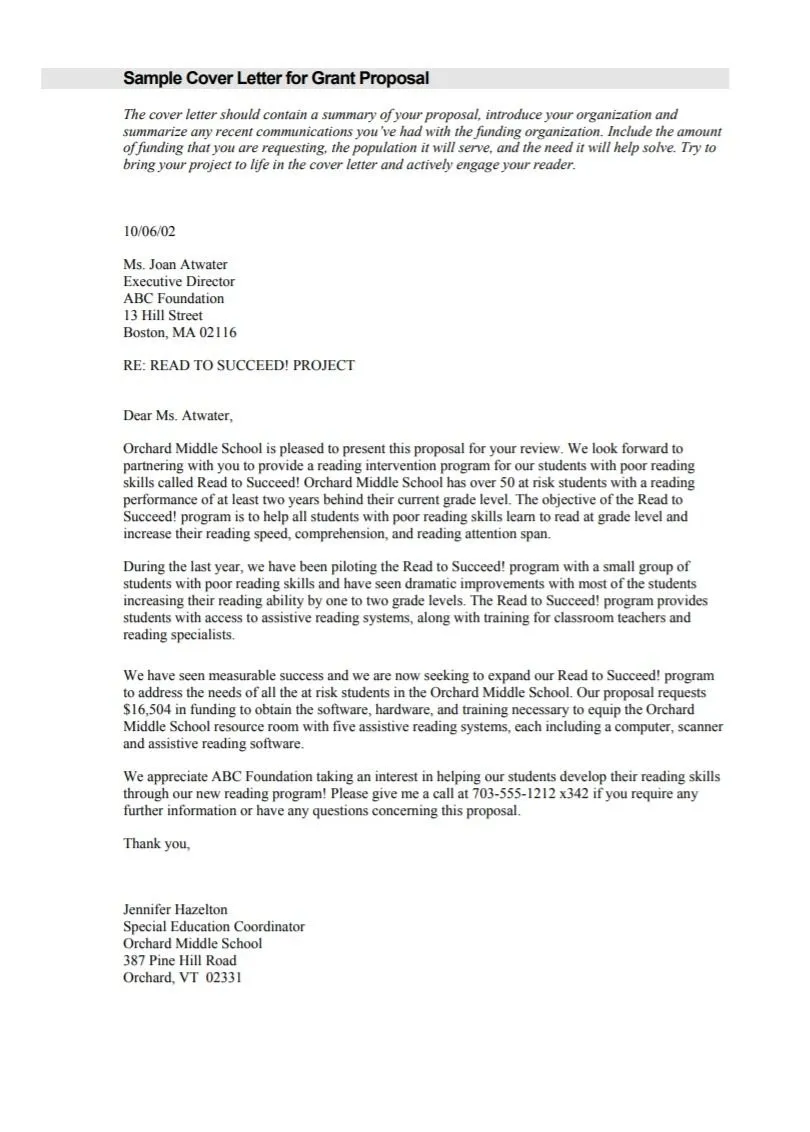
Briefly demonstrate your understanding of the project or the requirements outlined in the request for proposal (RFP). Show that you have thoroughly reviewed the project scope and that your proposal is a direct response to their needs. This can be achieved by referencing specific aspects of the project or RFP that you have addressed in your proposal. Use language that indicates your familiarity with the project’s objectives and challenges. This shows the recipient that you’ve done your homework and are committed to delivering the requested solution. Briefly touch upon the key aspects of the project. This strengthens your credibility and underscores your dedication.
Mentioning the Proposal’s Contents
Provide a brief overview of the proposal’s contents, highlighting key sections or deliverables. This allows the recipient to quickly understand the structure and main topics of the proposal. You can briefly mention sections such as the executive summary, methodology, budget, and timeline. This helps the recipient know what to expect when they read the full proposal. Avoid overwhelming the reader with excessive details. The idea is to give the reader a glimpse of the document’s structure, which will help them navigate it more easily. Mentioning the content can act as a roadmap, helping the reader understand the proposal at a glance.
Call to Action
Clearly state what action you want the recipient to take. The call to action is essential to guide the reader toward the desired outcome. Be specific and direct, whether it’s requesting a meeting, asking for approval, or simply encouraging them to review the proposal. For example, ‘I would welcome the opportunity to discuss this proposal further,’ or ‘Please review the proposal and let me know if you have any questions.’ The call to action should leave no doubt about your expectations. Make it easy for the recipient to respond by providing your contact information again and specifying the desired next steps. The goal is to prompt a positive response. You should make sure the recipient knows what they should do next.
Professional Closing and Signature
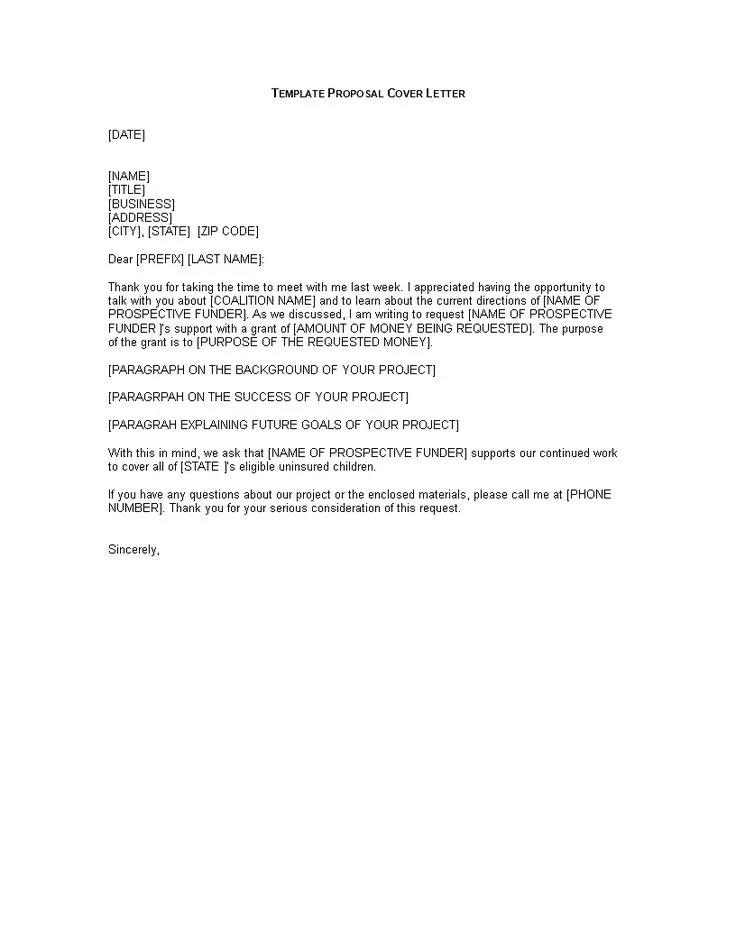
Close the letter professionally, using a formal closing such as ‘Sincerely,’ ‘Respectfully,’ or ‘Best regards,’ followed by a comma. Leave several lines for your signature, and then type your full name and title below the signature space. If sending an electronic version, you can type your name and title. For a physical copy, sign your name in ink above your typed name. This closing strengthens your professional image and shows respect for the recipient. The correct closing reinforces the tone established throughout the letter, showing respect and seriousness. Ensure that your name and title match the information listed in your contact details at the beginning. The goal is to reinforce your professional image.
Formatting and Presentation Tips for Your Letter
Keep it Concise and Focused
Keep your cover letter concise and to the point. The recipient is likely reviewing multiple proposals and has limited time. Aim for one page, or at most, two pages. Each paragraph should focus on a single idea, and avoid unnecessary jargon or overly complex language. Use clear and straightforward language. The goal is to convey information efficiently. A concise letter is more likely to be read and understood. Focus on the most important points and avoid including any irrelevant information. A brief, well-written letter demonstrates respect for the reader’s time and keeps them engaged.
Proofread Carefully
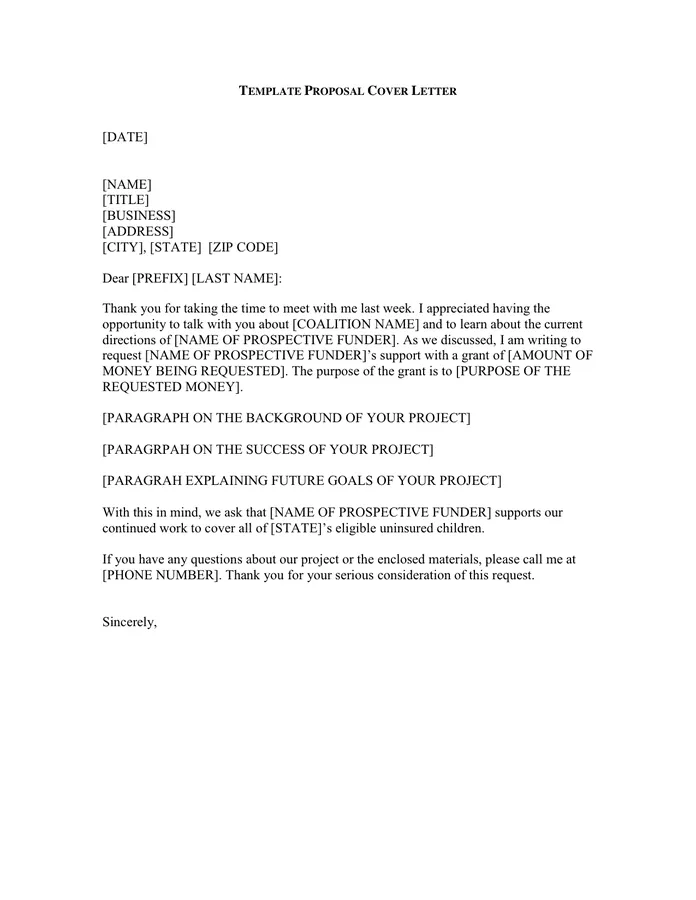
Proofread your cover letter multiple times for any grammatical errors, spelling mistakes, or typos. These errors can undermine your credibility and convey a lack of attention to detail. It’s advisable to use a spell-checker and grammar-checker, but also review the letter manually. Ask someone else to read it over as a second set of eyes can often catch mistakes you might have missed. Incorrect grammar and typos create a negative impression and can make it difficult for the reader to take your proposal seriously. Meticulous proofreading shows that you take pride in your work and pay attention to detail, which are vital characteristics of a reliable partner. This can make the difference between success and rejection.
Use a Professional Tone
Maintain a professional tone throughout your cover letter. Use formal language, avoid slang or colloquialisms, and stay respectful. Be polite, but don’t use overly casual or familiar language. Remember, you’re making a first impression and need to appear credible and trustworthy. Ensure your language is appropriate for the target audience. The professional tone sets the tone for the entire proposal and shows that you are serious about the project. Focus on facts and objective statements, and avoid any overly emotional or subjective language. Keeping a professional tone helps the reader see your work as credible.
Include Relevant Keywords
Incorporate relevant keywords related to your proposal and the project. This can help improve your proposal’s visibility and make it easier for the recipient to understand the focus of your proposal. Research the keywords related to the specific industry or project. Integrate those keywords naturally throughout your cover letter. This will help the recipient understand the relevance of your proposal to their needs. It is crucial to avoid keyword stuffing; the keywords should seamlessly fit into the context. Keywords improve the discoverability of your proposal. Use keywords relevant to your target audience.
Tips for Different Proposal Types
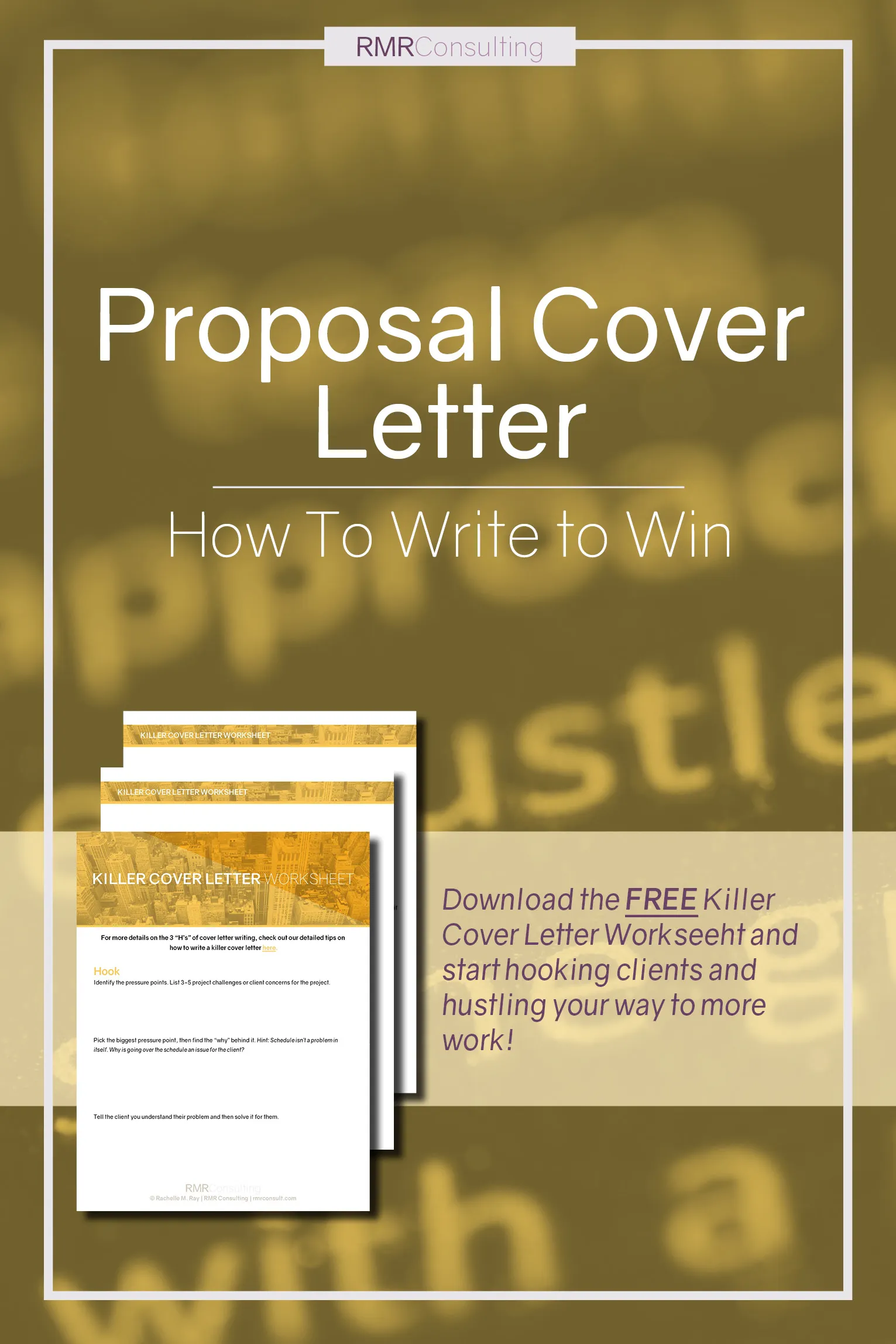
Government Proposals
Government proposals often have specific requirements. Carefully review the Request for Proposal (RFP) guidelines, paying close attention to all instructions, page limits, and formatting standards. Government agencies place a high value on adherence to their guidelines. Use clear and concise language, avoiding technical jargon that may be unclear. Focus on addressing the agency’s objectives and demonstrating how your proposal meets their needs. Be sure to follow the specific formatting instructions. The key is to provide a clear and thorough response to their requirements.
Business Proposals
Business proposals need to highlight the value you provide to the client. Focus on the benefits of your solution and how it can solve the client’s problems or help them achieve their goals. Tailor your cover letter to the specific needs of the client and demonstrate how you understand their business. The cover letter should be persuasive and clearly communicate the unique value proposition. Highlight your expertise and the client’s benefits in a compelling manner. Personalize your approach to increase the likelihood of acceptance.
Grant Proposals
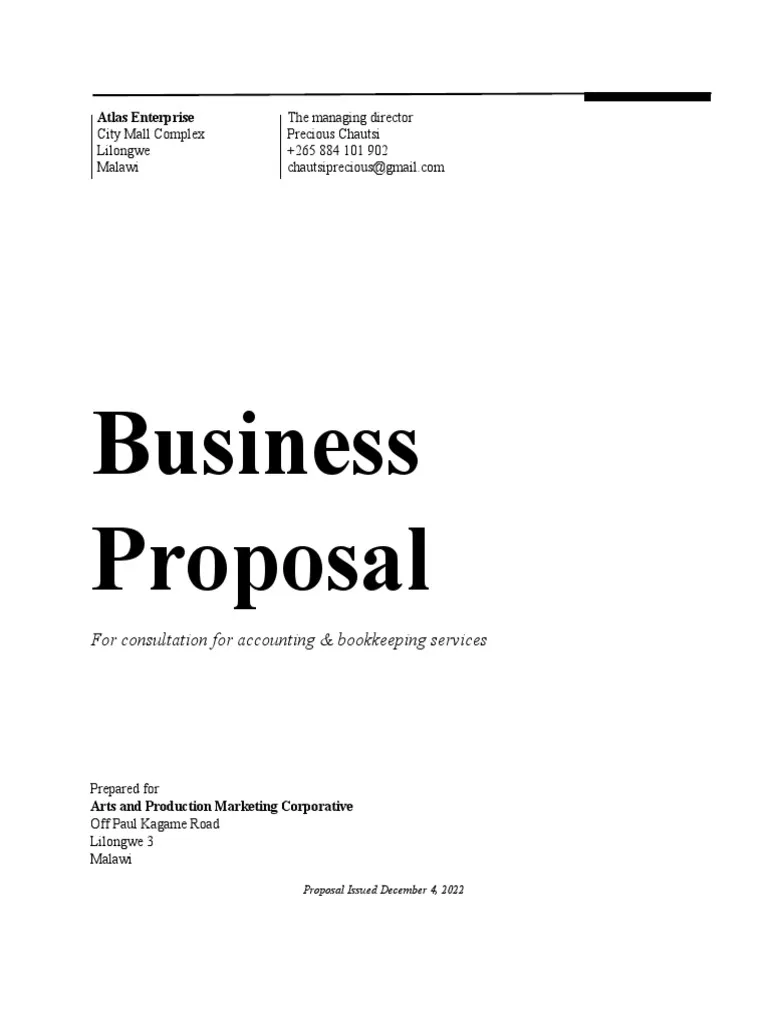
Grant proposals should clearly state the purpose of the grant and how your project aligns with the funder’s mission. Demonstrate how your project will benefit the community or target group. Show your understanding of the funder’s priorities and demonstrate how your project meets those objectives. Follow the grant guidelines closely, including all required information. Highlight the key outcomes and impact of your project. Make sure to address the funder’s specific criteria, including measurable goals and outcomes. Adherence to their instructions will show you are serious.
Common Mistakes to Avoid
Ignoring the Guidelines
One of the most common mistakes is ignoring the guidelines provided in the RFP or the grant application. Failure to follow instructions, formatting requirements, and page limits can lead to immediate rejection. Make sure that you carefully read and understand all the requirements before writing your cover letter. The failure to adhere to the guidelines can quickly disqualify your proposal. Ensure that you understand the requirements thoroughly, as it is very important.
Using Generic Language
Avoid using generic, one-size-fits-all language that could apply to any proposal. The cover letter should be specifically tailored to the project. Use specific details about the client or the project to demonstrate your understanding of their needs. Generic language does not show that you have spent time learning about the requirements. A personalized approach is much more compelling. The recipient should feel that you are focused on their project. Generic language often indicates that you have not carefully researched the requirements. Tailoring the content to the specifics will make your proposal stand out.
Failing to Proofread
Failing to proofread is another common mistake. Grammatical errors, spelling mistakes, and typos can immediately undermine your credibility. Always take the time to proofread your cover letter. Ask someone else to review it to make sure that you have caught any mistakes. Proofreading is a crucial step to eliminate mistakes that might create a bad impression. Multiple proofreads are essential to catch errors. Careful proofreading shows your attention to detail. Review for grammatical errors and spelling mistakes.
The Importance of a Strong Closing
The closing is a critical element that reinforces your professional image and encourages the recipient to act. A weak closing can undermine all the positive efforts you have made in your cover letter. Be sure to thank the recipient for their time and consideration. Restate the call to action, making it clear what you want them to do next, whether it’s scheduling a meeting or reviewing the proposal. A strong closing leaves a lasting positive impression and prompts the reader to take the desired action. It can be the determining factor in whether your proposal is accepted or rejected.
Example of a Proposal Cover Letter (Template)
Below is a template that combines the elements outlined above into a successful cover letter, and can be adapted to fit your specific needs. Keep in mind that you will need to tailor this to your specific project and client. This template is a basic framework; customize it to your project. (Template)
